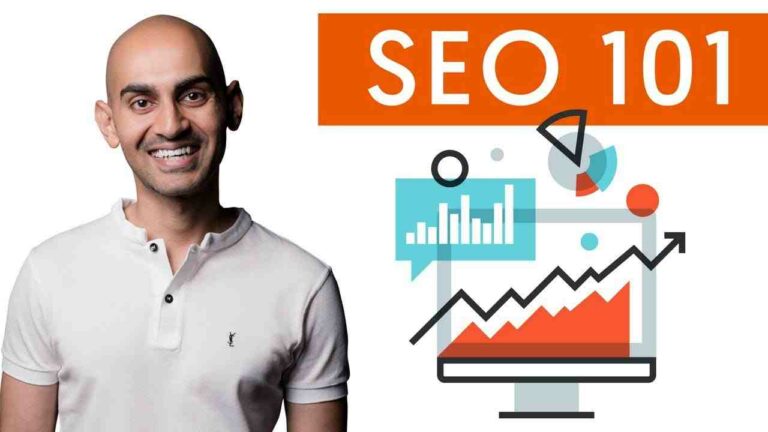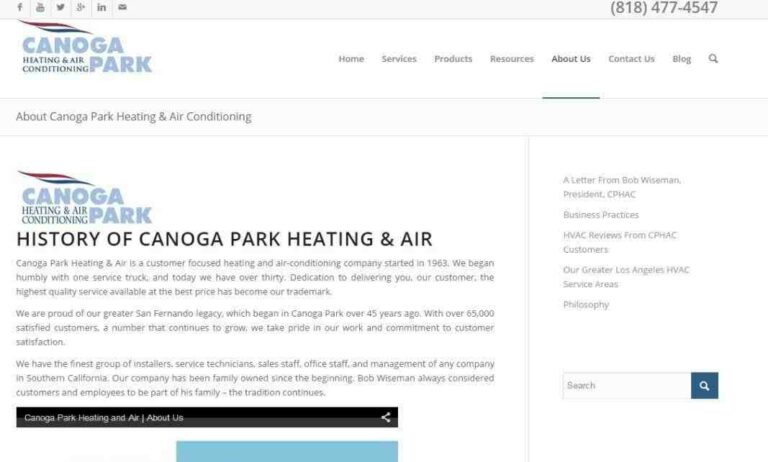Global SEO: 4 Effective SEO Frameworks to Manage Clients Without Losing Control
Framework 1: Gain Control By Supporting Centralization & Consistency Across Every Brand/Market Mix
You must have control over all levels:
These levels must be reflected in reports as they are key to developing a global SEO operational framework.
“In our setup phase, we created automated monthly dashboards with performance data from Google Search Console and SEOmonitor, delivered to central clients and local markets as insight emails. SEOmonitor provides free, unlimited API access integration as well as Data Studio connectors for all critical data of your SEO campaigns. Since 80% of our report output is based on Data Studio, this integration was key from the start.
These reports include keyword checks in defenses and conquests, highlighting key changes in performance and where additional optimization or review should be considered or undertaken.”
SEOmonitor image, November 2022
“You should also consider using automation to scale high-intensity jobs more efficiently.
For keyword segmentation and grouping, we took full advantage of SEOmonitor’s Smart Grouping functionality, which allows you to automatically organize keyword lists based on different combinations of metrics and filters. These smart groups are constantly refreshed and updated based on those filters, so you’re always up to date with targeted changes and insights.”
Framework 2: Maintain SEO Campaign Flexibility So You Cater To Local Market Nuances Where Audiences Behave Differently
The truth is that a standardized approach to SEO helps you act on common problems and opportunities while scaling most of your technical SEO work.
But there’s no denying that some markets will show a very different picture than others in terms of instant visibility, page content and brand awareness.
You need to take advantage of these differences through local search data and intent signals integrated into your content workflow and overall SEO strategy.
“This allows us to centralize SEO actions at a level while adapting results to local nuances, market conditions and available opportunities,” explains Raluca.
This approach gives you a deeper understanding of the opportunities available in all markets in relation to demand and competition. You will therefore be able to prioritize markets and focus work at a regional level to ensure that these markets receive the right amount of support while designing the overall strategy towards cumulative growth.
“Delivering SEO programs for so many brands and markets within one client means working with huge search data sets that need to be managed in the most efficient way. This means saving time and ensuring a standardized approach to our work.
SEOmonitor’s keyword grouping system is flexible and easy to use when setting up campaigns for clients from multiple markets. Also, with the multi-location feature, the tool allows you to track keywords for different locations within the same client campaign.”
It is important to have the right technical infrastructure to support that level of complexity.
SEOmonitor image, November 2022
Framework 3: Better Integrate Media Efforts To Adopt A Unified Approach To Global Search
“In the current context where consumers do not see the difference between paid and organic search, we want to develop SEO and PPC across all media channels, expanding the experience to support ongoing activities and campaigns and drive additional leads and sales,” Raluca emphasizes.
The One Search unified framework allows you to assess:
Here’s what Raluca and her team did to make the most of the single search box:
“Our initial One Search tests relied on pausing PPC spend for keywords with consistent top position visibility and minimal/no PPC competition.
The results were phenomenal: we managed to achieve a 2x improvement in CTR with a minimal increase in CPC. This unified approach to search allows us to further increase results with better resource efficiency. In addition, we can become more competitive within the SEO and paid search space which leads to increased visits and conversions across all sites and demonstrates the value of an integrated approach to search when both channels are managed by the same agency.”
Framework 4: Grow & Benchmark All Target Markets Toward A Common Objective By Developing Search Maturity Roadmaps
Cross-market search maturity roadmaps allow you to assess:
This is where reliable visibility metrics help you create a realistic benchmark and evaluate online “real estate” in different markets:
“SEOmonitor’s visibility metrics helped us establish a robust measurement framework, which informed maturity plans. The viewability metric is particularly useful in understanding the current organic viewability of a client’s website across brands and markets so you can compare it against set goals and KPIs across mobile and desktop. This in turn allows us to develop a deep understanding of the opportunities available in each market. With this in-depth analysis, we can prioritize markets and focus on the regional level with the right amount of effort and resources.”
SEOmonitor image, November 2022
Easily Implement These 4 Global SEO Frameworks With SEOmonitor
When managing SEO for clients with multiple brands and markets, it’s critical to design effective frameworks that leverage both your strategic insights and the technology infrastructure at hand:
As Tudose and her team at Performics have shown, you need to come up with clear goals and frameworks from the start, while still being flexible enough to account for variation.
There are many things that can go wrong, from cannibalization issues to conflicting user patterns, so you need to be in control at all times.
We designed SEOmonitor so you can manage a large number of SEO campaigns while having fresh data at your disposal — with daily mobile and desktop rankings as standard. We believe it’s important to have the right level of data granularity to be able to make decisions faster.
In addition, with SEOmonitor you have all your campaign data. That’s why you get unlimited access to the API, exports and integrations with Google Sheets and Data Studio.
We know that it is equally important to track all changes, especially with large data sets, and that clients want compelling monthly reports with specific tracked KPIs.
Join us and hundreds of digital marketing agencies in our quest to create more transparency and accountability in the SEO industry. And measure effectively.
The opinions expressed in this article are those of the sponsor.
What is the last stage of CRM?
The CRM process consists of five stages such as outreach, lead acquisition, lead conversion, customer retention and customer loyalty – which requires a joint effort from the company’s marketing team, sales team and customer service team.
.
What is the most common CRM?
Listed below are the best CRM tools available in the market.
- Monday.com.
- Zendesk CRM.
- Pipedrive CRM.
- Salesforce CRM.
- HubSpot CRM.
- Oracle NetSuite.
- Zoho CRM.
- act! CRM.
What is CRM software? Customer relationship management (CRM) is a technology for managing all of your company’s relationships and interactions with customers and potential customers. The goal is simple: to improve business relations. A CRM system helps companies stay connected with customers, streamline processes and improve profitability.
What are the 3 types of CRM?
The three types of CRM systems are operational, analytical and collaborative.
Why is CRM 2022 important?
A good CRM system can help a business create stronger customer relationships while streamlining the processes used to interact with customers, helping to increase sales, improve customer service, and—as is the goal of most business ventures—increase sales and overall profits.
What are the 3 types of CRM? The three types of CRM systems are operational, analytical and collaborative.
What is the role of technology in CRM?
The use of CRM technology enables the integration and sharing of information, facilitates efficient and effective interaction between the organization and its users, enables the analysis of information about users and tailors responses to users.
Is a CRM part of information technology?
Customer relationship management is based on customer data and facilitated by the use of IT. In fact, CRM is a modern and developed tool for mining customer data that is supported by using different communication points in the system and creates a comprehensive view of the customer.
What is an example of CRM?
Examples of CRM Marketing Automation Sending a thank you note when a customer makes a purchase. Upsell or upsell to a customer if they purchase a specific product. Birthday card offer with promo code. Sending a discount to a customer who hasn’t shopped recently.
What is CRM with example?
Customer relationship management (CRM) is a technology that enables businesses large and small to organize, automate, and synchronize every aspect of customer interaction. Examples of CRM systems include marketing, sales, customer service, and support.
Is CRM a strategy or technology?
CRM stands for Customer Relationship Management. It is a company-wide business strategy designed to improve revenue and profitability, reduce costs and increase customer loyalty. The CRM philosophy is simple: put the client first.
Is SAP a CRM?
Both Salesforce and SAP are powerful mature company CRMs that offer typical CRM features — sales force automation, channel management, and SaaS or cloud access. They help sales reps and managers streamline their workflows and track leads to improve sales processes.
What is SAP CRM? CRM is short for customer relationship management. By definition, it covers all the ways you manage customer relationships in sales, marketing, customer service and e-commerce. With CRM software, you can automate and integrate these customer-facing activities.
What type of CRM is SAP?
SAP CRM applications were initially integrated on-premises customer relationship management (CRM) software produced by SAP SE targeting the marketing, sales and service business software requirements of medium and large organizations across all industries and sectors.
Is SAP CRM Technical or functional?
CRM has both aspects and you can opt for fully functional training modules.
What is SAP CRM called?
SAP Customer Relationship Management is known as SAP’s integrated customer relationship management module that helps any organization achieve their business goals and enables them to perform all customer relationship related tasks effectively.
Is SAP a good CRM?
SAP CRM is a very powerful tool for managing all aspects of CRM. SAP CRM is a very cohesive system that provides detailed options for interacting with the client and controlling actions in a very simple way. It covers all aspects of customer relationship management through sales, service and marketing modules.
Is SAP CRM a ERP?
SAP CRM is part of the SAP ERP (Enterprise Resource Planning) business suite and is used to implement the customization of CRM-related business processes for customer relationship management and for integration with SAP and non-SAP systems.
Is SAP CRM a ERP?
SAP CRM is part of the SAP ERP (Enterprise Resource Planning) business suite and is used to implement the customization of CRM-related business processes for customer relationship management and for integration with SAP and non-SAP systems.

